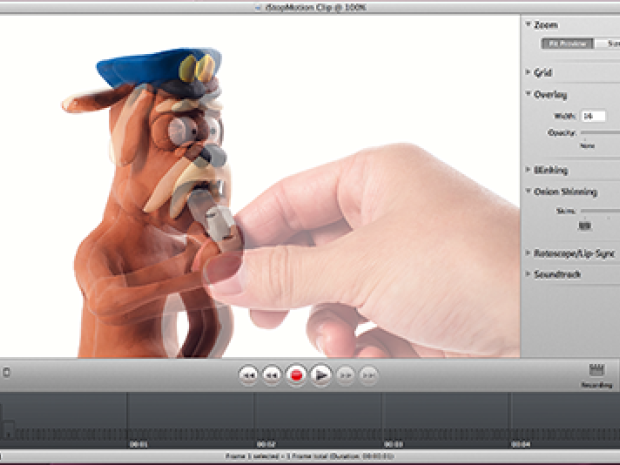Pixilation is one of my favorite kinds of animation both to make and to watch. You can think of it as full-body stop-motion animation. It’ll get you up out of your comfy seats and active! Even better: you can go outside to shoot.
In stop-motion animation, like that of Ray Harryhausen, Wallace & Gromit or Gumby you animate an inanimate object by taking a picture, and then moving it or parts of it a little bit, and taking another picture. You string these pictures or “frames” together in video-editing software to create the illusion of motion. People in pixilations appear to slide around without moving their legs, move between two different points in the blink of an eye, or even fly (!) because they run from one place to another between each frame. That’s why we spell “pixilation” with an “I” not an “E”: it’s about turning the subjects of the short films into magical pixies of a sort.
I got a lot of tips for this project from my friend and colleague Matthew Searle, who put it best: “The best thing about pixilation is that you have the most articulated puppet one could ask for – the human body! Just be sure your “puppets” are patient and excited about the project.”
You can see how it works in these classic examples:
- “Neighbours” (1952), a National Film Board of Canada short by Norman McLaren that is an allegory about peace and war, demonstrating some simple tricks that pixilation permits. I recommend skipping the first 2 minutes that’s when the magic starts, and who wants to watch the two argumentative men light and smoke their pipes. (Which was normal 60 years ago, but not so much now!)
- A personal favorite in our household is the video for “End Love” by OK Go. Directors Jeff Lieberman and Eric Gunther shot the video over 18 hours on site at Echo Park in Los Angeles, including overnight– this can give you a sense of how much time you can invest in a project like this! Similarly, in the video for “Sledgehammer” (1987) by Peter Gabriel director Stephen R. Johnson engaged Aardman Animations (the makers of Wallace & Gromit) and the Brothers Quay and Peter Gabriel was stuck under glass for 16 hours! It won 9 MTV Video Music Awards (still the record!), and it is MTV’s all-time #1 animated video.
- A few faculty and 140 high school students from Hunter College High School put together nearly 2,000 photos at 8 frames per second, for a terrific music video all shot on a Canon T3 camera. And here’s one more pretty fun one by Pixillation Lab Orizzonti 2010, a group of kids ranging in age. The first 2 minutes has no pixilation in it, so you can fast-forward past the first third of it.
- Matthew’s favorites: Secret Adventures of Tom Thumb, a very strange movie with a tiny clay character interacting with human characters. Fresh Guacamole and Western Spaghetti: while not all of PES‘s films are pixilations, they will give you lots of ideas of how to create a collection of equivalents to animate with your actors. Food, a totally wild short in which Jan Svankmajer used clay to expand the human faces as they ate large objects.
Matthew and I describe below how to do this with still pictures. There’s another pretty easy way to get similar results, developed by another friend, David Yoon. Check out his tutorial: http://vimeo.com/71447335



